For Complete IIPM Article, Click on IIPM Article
Source : IIPM Editorial, 2006
An IIPM and Management Guru Professor Arindam Chaudhuri's Initiative
Indeed, while median home prices in the US were in July at 1.4% higher than a year ago, they had declined by almost 10% over the last three months, which is one of the steepest declines since 1990.
Since early July, the situation has, however, changed. There is now a widespread belief that the US housing market is dead and that the economy will slow down, and that, therefore, bonds will continue to rally because the Fed will shortly begin to cut interest rates. I may add that the media is also full of negative stories about the housing industry. Therefore, with presently so much bearish consensus about the economy, as a contrarian, I think that the upside for long-term bonds is now extremely limited.
For complete IIPM article click here
Source:- IIPM Editorial
Visit also:- IIPM Publication, Business & Economy & Arindam Chaudhuri Initiative
He is billed as the most charismatic leader to have emerged in the United States of America since John F. Kennedy. His youthful exuberance and fresh ideas swept the people off their feet. And his intention to contest for Presidency in 2008, has sent alarms ringing among the front-runners in the Republicans as well as Democratic camps.
Meet the 45-year old African American, Barack Obama. Born in Hawaii, he studied in Indonesia before moving to California. If he manages to make it to the White House, he will be the first black president of the United States.
For complete IIPM article click here
Source:- IIPM Editorial
Visit also:- IIPM Publication, Business & Economy & Arindam Chaudhuri Initiative
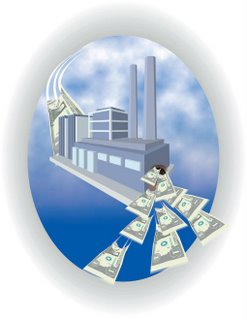 gains from its total assets is an important indicator of efficiency. RoA gives an idea as to how efficient management is at using its assets to generate earnings. Calculated by dividing a company’s annual earnings by its total assets, RoA taken for arriving at the B&E Power 100 is an absolute value. If one were to interpret that ratio, it tells what earnings are generated from invested capital (assets). RoA for companies can vary substantially and will be highly dependent on the industry. The RoA figure gives investors an idea of how effectively the company is converting the money it has invested in assets into net income.
gains from its total assets is an important indicator of efficiency. RoA gives an idea as to how efficient management is at using its assets to generate earnings. Calculated by dividing a company’s annual earnings by its total assets, RoA taken for arriving at the B&E Power 100 is an absolute value. If one were to interpret that ratio, it tells what earnings are generated from invested capital (assets). RoA for companies can vary substantially and will be highly dependent on the industry. The RoA figure gives investors an idea of how effectively the company is converting the money it has invested in assets into net income. an animated ad. A vintage car is driven out to a full public junction; cut to an ambassador, from which a netaji (along with his paraphernelia of loudspeakers) emerges and launches into a speech; cut to a limousine, which spreads out a ramp and a model walks out of the swanky car... another car lighting up the whole cricket stadium... and so on. The ad ends with a VO: ‘If you want so much from the car, get the power of the Amaron... lasts long, really long!’
an animated ad. A vintage car is driven out to a full public junction; cut to an ambassador, from which a netaji (along with his paraphernelia of loudspeakers) emerges and launches into a speech; cut to a limousine, which spreads out a ramp and a model walks out of the swanky car... another car lighting up the whole cricket stadium... and so on. The ad ends with a VO: ‘If you want so much from the car, get the power of the Amaron... lasts long, really long!’Our USP is fast delivery in pizzas and this is even accepted by the customer. Today when you think of home delivery pizzas, the first thing that comes in your mind is Domino’s. To deliver faster our delivery boys are now given bikes instead of scooters. So, fast delivery and freshness, are our twin differentiators.
For complete IIPM article click here
Source:- IIPM Editorial
Visit also:- IIPM Publication, Business & Economy & Arindam Chaudhuri Initiative
 Nokia, “What you will see coming from us in the future is not just a numbering system, you are going to start seeing names that carry a meaning and are important to consumers.” Call it piggy-backing on the innovative branding moves of their competitors or simply being copy-cats, the company has certainly realized that customers all around the world identify themselves with and respond well to product names that carry some connotation.
Nokia, “What you will see coming from us in the future is not just a numbering system, you are going to start seeing names that carry a meaning and are important to consumers.” Call it piggy-backing on the innovative branding moves of their competitors or simply being copy-cats, the company has certainly realized that customers all around the world identify themselves with and respond well to product names that carry some connotation. JC Penny – that created billion-dollar store brands like Arizona and St. John’s Bay went on to prove that department stores could manage very well without ‘established’ brands, thank you very much. Now, the chain is going one step higher – or shall we say inside???!!! By the first quarter of next year, it will be launching its very own innerwear (read: Lingerie) private store brand, Ambrielle, a range of 4,000 intimate apparel products.
JC Penny – that created billion-dollar store brands like Arizona and St. John’s Bay went on to prove that department stores could manage very well without ‘established’ brands, thank you very much. Now, the chain is going one step higher – or shall we say inside???!!! By the first quarter of next year, it will be launching its very own innerwear (read: Lingerie) private store brand, Ambrielle, a range of 4,000 intimate apparel products. billion of equity capital and computer services $770 million in FY 2006. Finance, insurance, real estate and business services in total attracted $452 million. Mauritius tops the chart in country-wise FDI inflow followed by US. Thanks to the double taxation avoidance agreement, Mauritius poured in a whopping $1.36 billion in 2005-06, while the United States poured in another $346 million. FDI inflows from UK and Singapore increased the most to $261 million and $166 million in FY 2006.
billion of equity capital and computer services $770 million in FY 2006. Finance, insurance, real estate and business services in total attracted $452 million. Mauritius tops the chart in country-wise FDI inflow followed by US. Thanks to the double taxation avoidance agreement, Mauritius poured in a whopping $1.36 billion in 2005-06, while the United States poured in another $346 million. FDI inflows from UK and Singapore increased the most to $261 million and $166 million in FY 2006. have fuelled a surge of fundamentalism in Muslims, American Christians and some Israeli Jews that has now boiled over to rampant extremism, terror and messianic visions of good versus evil. Many warmongers in Washington, including apparently some in the White House, seek to expand their endless military campaign to Iran & Syria. Indeed, the daily demonizing of Iran, Syria and Hezbollah is the same as the morbid demonisation of Saddam before the Iraq War. Political operatives may also judge that an increased sense of danger and insecurity will tilt votes to the Republicans in the US congressional elections in November.
have fuelled a surge of fundamentalism in Muslims, American Christians and some Israeli Jews that has now boiled over to rampant extremism, terror and messianic visions of good versus evil. Many warmongers in Washington, including apparently some in the White House, seek to expand their endless military campaign to Iran & Syria. Indeed, the daily demonizing of Iran, Syria and Hezbollah is the same as the morbid demonisation of Saddam before the Iraq War. Political operatives may also judge that an increased sense of danger and insecurity will tilt votes to the Republicans in the US congressional elections in November. Following Dell’s recall of 4.1 million lithium-ion batteries made by Sony for its laptops, Apple has also started recalling 1.1 million batteries sold in the US and another 700,000 batteries from across the world. Just like in the case of Dell, these batteries have also been made by Sony Corp. Although, Sony has assured its assistance to Apple in the entire recall process, the episode will surely dampen Apple’s efforts of soon introducing a new range of products supported by Intel Microprocessors.
Following Dell’s recall of 4.1 million lithium-ion batteries made by Sony for its laptops, Apple has also started recalling 1.1 million batteries sold in the US and another 700,000 batteries from across the world. Just like in the case of Dell, these batteries have also been made by Sony Corp. Although, Sony has assured its assistance to Apple in the entire recall process, the episode will surely dampen Apple’s efforts of soon introducing a new range of products supported by Intel Microprocessors.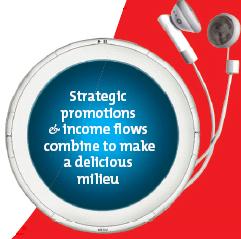




The rankings were decided on the basis of the cost of a shopping basket consisting of 95 goods and 27 services. This basket costs $ 38.5 in Mumbai and $ 42.8 in Delhi. Compare that to $ 121.5 in Oslo and more than $ 100 in London, Copenhagen, Zurich, Tokyo, Geneva and New York! The net hourly pay in Delhi is pegged at $ 1.2 and $ 1.4 in Mumbai, as against $ 19.5 in Zurich and upwards of $15 in London and New York. Finally, what’s urban life without that most vital ingredient – yes, right, we are talking about vacations! People in Delhi work 2,121 hours and are entitled to 15 paid vacations per year while in Mumbai, people work 2,205 hours and get 17 days off in a year. The global average is 1,844 working hours and 20 vacations. Seoul tops the list with 50.2 hours a week.
For complete IIPM article click here
Source:- IIPM Editorial
Visit also:- IIPM Publication, Business & Economy & Arindam Chaudhuri Initiative
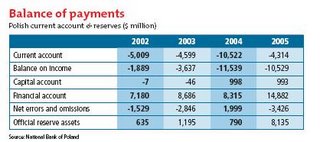

 Saudi Arabia’s international investment position is very impressive, thanks to the rising crude oil prices. Current account surplus for 2005 stood at a whopping $90.66 billion, as compared to $51.92 billion in 2004. Current account as percentage of GDP was at 28.3 in 2005, as against 20.6 in 2004. Reserves in terms of number of months of import cover totaled 21.20 in 2005, which declined from 25.50 in 2004.
Saudi Arabia’s international investment position is very impressive, thanks to the rising crude oil prices. Current account surplus for 2005 stood at a whopping $90.66 billion, as compared to $51.92 billion in 2004. Current account as percentage of GDP was at 28.3 in 2005, as against 20.6 in 2004. Reserves in terms of number of months of import cover totaled 21.20 in 2005, which declined from 25.50 in 2004. violation perpetrated by the war, the facts are appalling. The US Defense Department, testifying before the Congress, stated that it paid $19 million to the Iraqis for around 600 separate incidents. With the commonly reported dole of $2,500 per victim, the admitted killings by Americans then mount up to 7,600! It was also reported that recently that the US had ‘bettered’ on their compensation and paid $38,000 for Haditha victims’ family members – averaging to a beggarly $1,600 per person ‘killed’ (read: raped and slaughtered).
violation perpetrated by the war, the facts are appalling. The US Defense Department, testifying before the Congress, stated that it paid $19 million to the Iraqis for around 600 separate incidents. With the commonly reported dole of $2,500 per victim, the admitted killings by Americans then mount up to 7,600! It was also reported that recently that the US had ‘bettered’ on their compensation and paid $38,000 for Haditha victims’ family members – averaging to a beggarly $1,600 per person ‘killed’ (read: raped and slaughtered).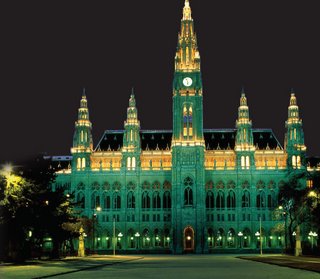 without which, as he stated, “It would be sacrilege to say that any visit to Vienna is complete!” Home to the Hapsburgs – the ruling family of Austria for innumerable generations – the sprawling, verdant gardens of Schönbrunn have never ceased to hold captive the collective imagination of tourists. The UNESCO, too, has been swift in its appraisal of the gravitas this edifice harbours, declaring it an integral jewel emblazoning the World Heritage List of cultural spaces.
without which, as he stated, “It would be sacrilege to say that any visit to Vienna is complete!” Home to the Hapsburgs – the ruling family of Austria for innumerable generations – the sprawling, verdant gardens of Schönbrunn have never ceased to hold captive the collective imagination of tourists. The UNESCO, too, has been swift in its appraisal of the gravitas this edifice harbours, declaring it an integral jewel emblazoning the World Heritage List of cultural spaces.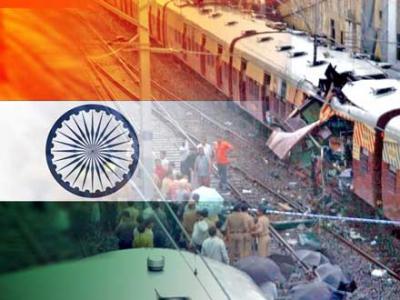


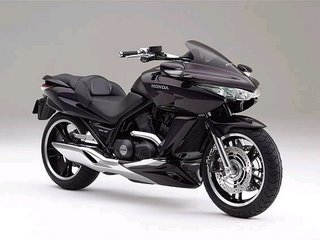 , phenomenal when the total segment size is just 6223 units divided among six players). Segment C, the mid-size car market: With a threatening 20% market share, Honda is painfully biting the heels of the legacy leader Tata Motors, which has market share of 21%. And that is the art of war the Samurai Honda would love to practise. But of late, with the early entry of various competitors in other profitable segments, the killing question arises whether Honda’s traditional ‘wait & destroy’ strategy will backfire, what with quasi-monopolies like Suzuki ruling the market like nobody’s business. Will Honda’s tried and tested strategies work? Or will Honda have to eat humble pie? Market figures give an astounding insight!
, phenomenal when the total segment size is just 6223 units divided among six players). Segment C, the mid-size car market: With a threatening 20% market share, Honda is painfully biting the heels of the legacy leader Tata Motors, which has market share of 21%. And that is the art of war the Samurai Honda would love to practise. But of late, with the early entry of various competitors in other profitable segments, the killing question arises whether Honda’s traditional ‘wait & destroy’ strategy will backfire, what with quasi-monopolies like Suzuki ruling the market like nobody’s business. Will Honda’s tried and tested strategies work? Or will Honda have to eat humble pie? Market figures give an astounding insight!Numerous studies conducted by Indian as well as global research outfits have shown that when the tax regime is too retrograde or repressive, the first reaction of tax payers is to evade taxes if they can. Since Indian tax officials are not saints, it is inevitable some will help tax payers avoid paying these complicated taxes. When the marginal rate of income tax was a fantastic 97%, tax avoidance too was the highest.
For complete IIPM article click here
Source:- IIPM Editorial, 2006